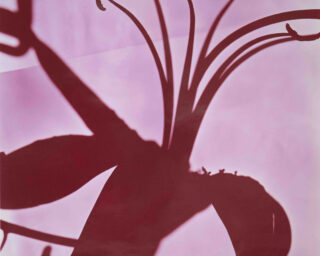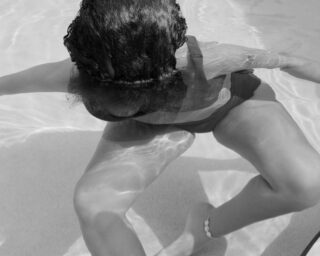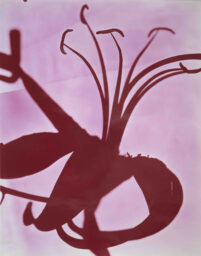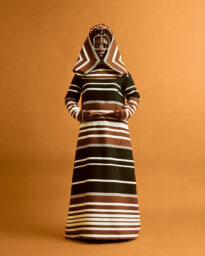Interview with Michael Kamber
Photojournalist Michael Kamber, a recipient of the World Press Photo Award, has worked in the field for more than twenty-five years. He covered the war in Iraq as a writer and photographer for the New York Times between 2003 and 2012, and he was the paper’s principle photographer in Baghdad in 2007, the war’s bloodiest year. His new book, Photojournalists on War: The Untold Stories from Iraq, includes illustrated interviews with three dozen of the world’s leading photojournalists about their experiences in Iraq. Brian Sholis spoke with Kamber by phone.
Brian Sholis: In your introduction you write that “censorship became the starting point for this book.” Can you speak about the tightening of restrictions on photojournalists and the political ramifications of these changes?
Michael Kamber: We began to see changes in what photojournalists were allowed to document as early as 2004. During 2003 the journalistic landscape in Iraq was very open, and we could basically link up with a unit on the street, or find a commanding officer with whom to do quick embeds with very little paperwork. Yet as early as 2004 there were more forms to fill out, additional restrictions. When I went back in 2007, the scene had changed a lot. So much was off-limits, and that only increased.
Photographers were going to Iraq to show the reality of war. When you arrive and discovered you couldn’t show wounded American soldiers, or prisoners, or car-bomb scenes, or memorials for Americans who had been killed—at a certain point it just seemed like we were not able to get out to the American people the information we were trying to get out. I should point out, too, that even when we were able to get these types of images, editors back home frequently didn’t want to publish them. There were several explanations for this. Some editors feared that the images would upset American readers, and that people would cancel their subscriptions. Others were concerned that their Pentagon or military reporters would lose access. There was definitely a worry about backlash, and it was founded. I worked in situations with reporters where we did indeed lose access, and even were threatened . . .

Balad, Iraq, November 13, 2004—United States injured soldiers sit on a cargo plane before taking off to Germany from Balad Air Base. The interior lights of the plane are red because of an “alarm red” attack, which indicates that the base is under attack, usually by incoming mortar rounds. Since the attack on Fallujah began in early November, hundreds of soldiers have been injured and evacuated from the country. Photograph by © Lynsey Addario.
BJS: Which only exacerbated difficult conditions on the ground. Dexter Filkins, in his foreword, calls the Iraq experienced by photojournalists during the war a “wraparound battlefield.” Do you think this is now the default “setting,” so to speak, for the war environment? If so, how does this change things for photographers?
MK: Well, I think Iraq was pretty unique. You can see similar conditions in Afghanistan, but nonetheless there are some areas fairly clearly understood as Taliban territory. In Iraq, the battle was all around you. It was largely an urban war, yet there was plenty of fighting in the countryside, too. There was no front line. There were roadside bombs, bombs in the marketplaces, bombs in the trunks of cars. It was all around you, all the itme; you were always susceptible to it.
And photographers were also targets. As westerners, we had a price on our heads. So I think Iraq did mark a turning point. It was Chris Hondros who explained it best to me. In the past, there were different armed combatants, and they needed the press, relied on it to some degree. That gave us some immunity and safety. Now people have their own channels of communication. The insurgents in Iraq, and elsewhere in the Middle East, have their own media, basically. In Iraq, they had their own photo and video operations; they were filming their own attacks. They no longer needed the mainstream press. As Chris said, we were actually a hindrance; we were in their way. I’ve been doing this for twenty-five years, and in Iraq I could tell that the equation had changed.
BJS: In your interview with him, Patrick Chauvel comments on the relationship between photojournalists’ work and amateur photographs from Iraq. Did the environment for photojournalists and their work change after the Abu Ghraib revelations?
MK: The photos from Abu Ghraib did change a lot. Every single person I interviewed in the book, when I asked what are the most important images from Iraq, responded by mentioning the pictures taken by prison guards at Abu Ghraib. That’s remarkable, and there are complex reasons for it. Those photos changed everything in Iraq, especially Iraqis’ perception of us.
Yet there are a few different issues here, involving as well how the media is changing. Joao Silva said that the problem wasn’t that we hadn’t taken a good image in Iraq, but that we had taken too many. Every image is on a homepage for ten minutes and then is refreshed. When I grew up, we sat with magazines for a week. Additionally, a French photographer who has been working for nearly forty years and who is not in the book has noted how, in the past, when you needed a good photo you needed someone who could expose Kodachrome, travel the world, get the image, send the film back. There were not that many people with all the skills necessary. Today, anybody with a cell phone can get a photo that would be deemed useable, that could end up on the front page of newspapers. I wouldn’t say there is no longer a need for photojournalists, but the standards for what is deemed photojournalism have come down very far. Sometimes newspaper editors will print photographs without knowing their source, or without knowing the agenda of the person who took the picture. What’s missing, and what I hope to address with projects like the Bronx Documentary Center, is the ethical training, the training in standards and journalistic values.

Tikrit, Iraq, April 14, 2003—In Saddam’s hometown, a US Marine slides down a marble handrail in one of the dictator’s extravagant palaces. The residence contained carpets worth hundreds of thousands of dollars and at least one golden toilet. Tikrit was the last major city to fall to Allied forces during the invasion and, despite fighting that continued through Iraq, Marines celebrated victory. Photograph by Ashley Gilbertson/VII.
BJS: The book has specific boundaries: in its pages readers will find no military leaders, politicians, academics. There are few if any photos of daily life in Iraq. Can you speak about how you came to shape the book’s countours?
MK: I wanted to put forward a view of the war that I hadn’t seen in the media, that I didn’t feel was out there for the American public to encounter. That was at the bottom of it. I was coming back from a war that I knew well, and I simply wasn’t seeing it here in America. Americans didn’t seem to understand what was really happening. They knew the war was taking place, had vague ideas about it, had seen some TV footage and some statistics, but I felt like a broader understanding was mising.
BJS: How many pictures in the book are previously unpublished, or not widely published?
MK: Some had been published in Europe, but not in the US. Some had been published in smaller domestic outlets, or only months after the incident depicted had taken place, perhaps because editors weren’t comfortable publishing the images at the time. We really dug into people’s files; we did a lot of research. I pushed the photographers to send me the “hard stuff,” including stuff their editors wouldn’t publish. I can’t give you a percentage, but people are unlikely to have seen a fair number of the photographs included in the book.
BJS: You also mention in your note on methodology that you worked with the photographers to recaption some images. Did anything surprising come out of that process?
MK: [laughs] Yes! Certainly for me. Some of the pictures nobody has looked at for ten years, from spring 2003, had captions referring to “the end of the war.” “This picture was taken a week after the end of the war.” I realized quickly that us photographers had no idea of what was coming down the pike. None of us did. I remember taking a taxi to Baghdad and dragging my suitcase up the river until I found the New York Times bureau. I was there to photograph the dawn of a new day in Iraq. We just had no idea what was coming. Reworking the captions brought back how unprepared we were as we went into this military adventure.
BJS: You reproduce an Embed Agreement in the back of the book. What provisions within it might be surprising to the majority of people who have not read it?
MK: There are dozens and dozens of embed agreements. It changed every time I went back. Afghanistan has a different one; different regions in Afghanistan have different embed agreements. I must’ve signed twenty different versions of the document over the years. I’m hoping people will see that we were being made to get written signatures from wounded soldiers to take their pictures, which is completely impossible. After a guy’s been shot and he’s bleeding and being loaded into a helicopter, you can’t run over with a pen and ask him to sign a piece of paper. . . .
And you can’t do it beforehand. You can’t show up and ask a bunch of guys who are suspicious of you in the first place and say, “Hey, guys, in case you get wounded. . . .” The embed agreements put us into unworkable situations in which we’re not free to publish pictures of what is actually going on. Something like 25,000 Americans were wounded over there. We couldn’t get their pictures out to the American public. We don’t want to show blood and gore for gratuitous reasons, but this is our war. We invaded this country, rightly or wrongly. We should see what it looks like.

Al Musayyib, Iraq, May 27, 2003—An Iraqi child jumps over the remains of victims found in a mass grave south of Baghdad. The bodies had been brought to this school for identification by family members who searched for identity cards and other clues among the skeletons to identify missing family members. The victims were killed by Saddam Hussein’s government following a Shi’ite uprising here following the 1991 Gulf War. Photograph by Marco Di Lauro/Getty Images.
BJS: Several photographers comment on how their ranks eventually dwindled to about six. Approximately how many Western photojournalists are there today? Is there a different group of photographers who are reporting, or is it some of the same people you profile in the book?
MK: Well, conditions have changed. You almost can’t take a photo there anymore. It’s nearly a police state at this point. Literally the day the Americans pulled out, that was it. You walked outside with a camera and you were immediately sent home. You couldn’t go into the Green Zone with a camear, you couldn’t photograph in a fish market, you couldn’t leave Baghdad. Franco Pogetti, who has put in year after year in Iraq, said as much, and while I haven’t been there in over a year, I went to a public square one day to photograph a statue and was immediately told, “No pictures.”
I can’t say who’s there now. I don’t know if anybody is there now. I was there the week the Americans left, at the end of 2011. Every news operation in town was closing their bureau. There might be a handful of freelancers. NPR might have a stringer; the wire services might have people there; the Times still has its bureau. But it’s a done story, so far as I can tell.
We did get some work out. The frustration with Iraq was that you had to put in months. I would go for two months and come out with a handful of good photos. I could go to Libya or Afghanistan and come away with the same number in one day. In Iraq, photographers were so locked down, but they hung in there and got good stuff. It was a difficult exercise, but compared to the conditions after the Americans left … well, the Iraqi government has shut things down 100 percent.























